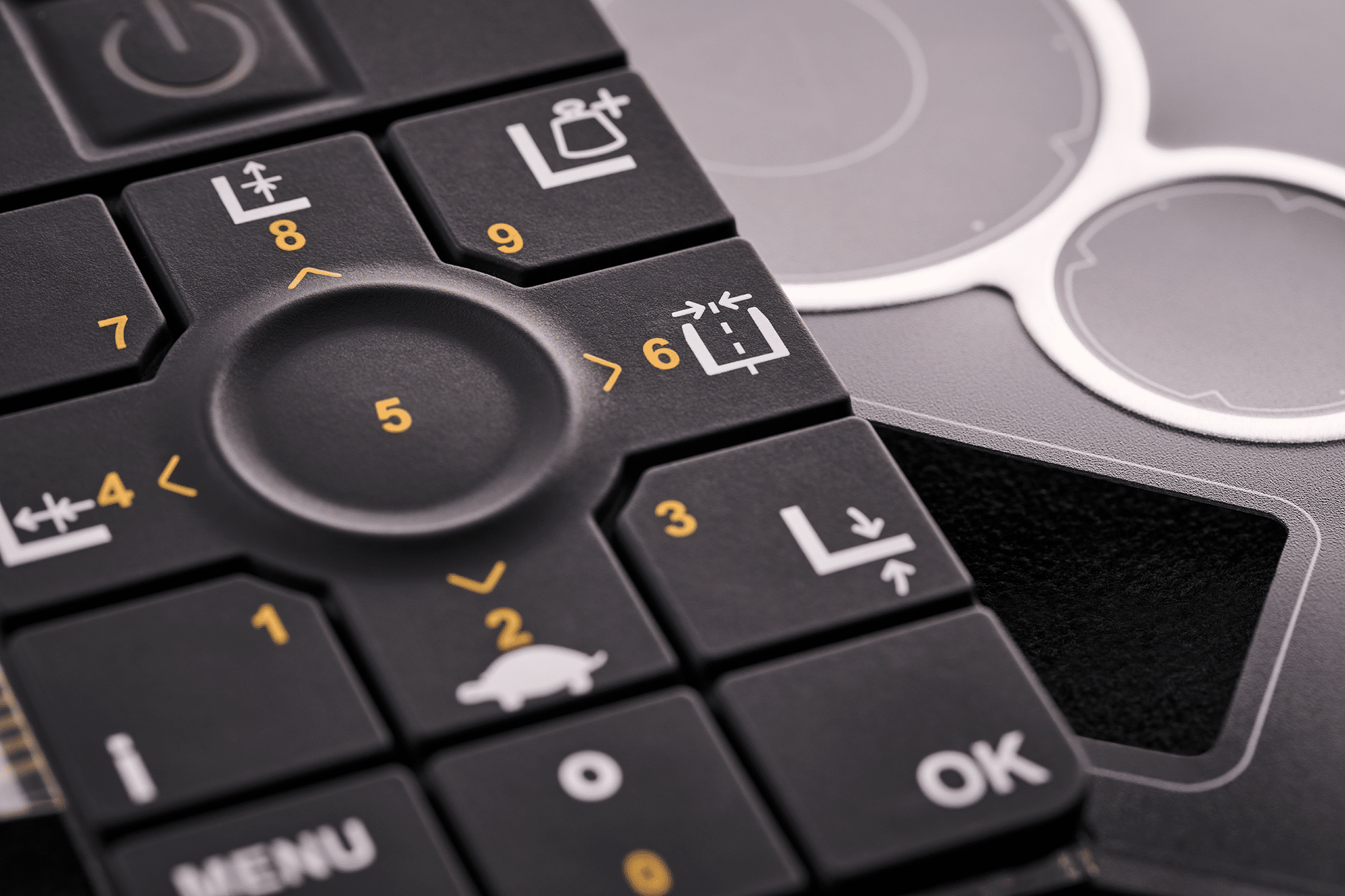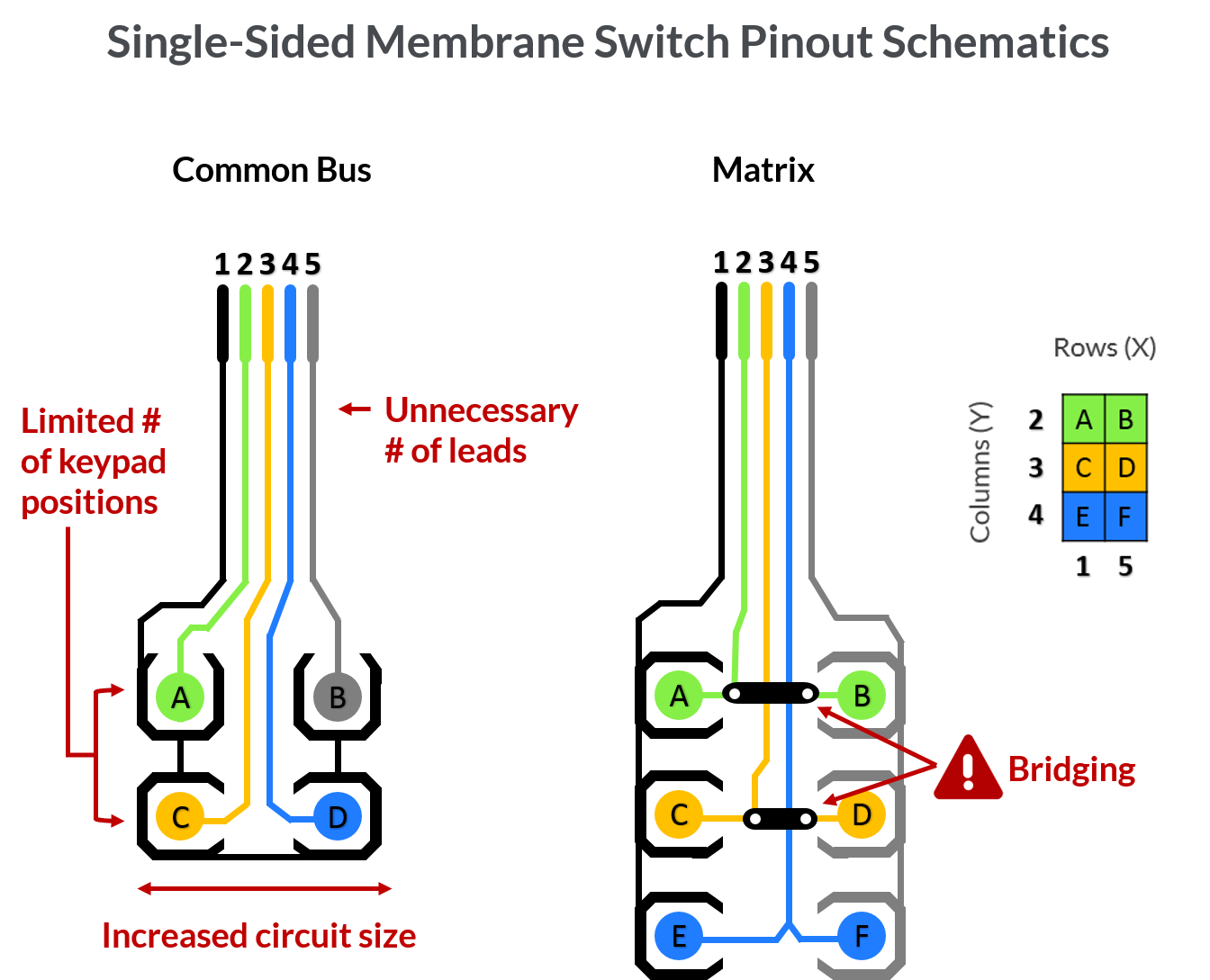Understanding the Significance of Membrane Change in Modern Electronics
Membrane switches are integral elements in modern-day digital gadgets. They provide a mix of performance and style that improves customer communication. Their lightweight and durable nature makes them ideal for numerous applications. As markets develop, the demand for customization and advanced attributes grows. Understanding just how membrane switches add to development discloses their value fit the future of electronic devices. What lies ahead for this modern technology?
The Essentials of Membrane Layer Switch Modern Technology
Often ignored, membrane switch modern technology plays a vital role in the contemporary electronic devices landscape. These gadgets, made up of multiple layers, work as user interfaces for different digital products, ranging from house home appliances to clinical tools. A normal membrane layer button contains a graphic overlay, a spacer layer, and a circuit layer, which are thoroughly assembled to produce a practical interface.When stress is applied to the overlay, the circuit layer is completed, enabling signals to be transferred to the tool. This technology is known for its versatility, allowing personalization in form, design, and functionality to meet particular individual demands. In addition, membrane switches are thin and lightweight, making them suitable for applications where space is a premium. Their toughness and resistance to ecological factors further enhance their charm, guaranteeing they can hold up against harsh conditions while maintaining functionality. In general, membrane switch technology is indispensable to producing effective and easy to use electronic devices

Secret Advantages of Membrane Layer Switches Over
Membrane switches deal several key benefits that make them a favored choice in numerous electronic applications. Their design permits a small form variable, allowing manufacturers to develop streamlined and light-weight tools. In addition, membrane layer switches are immune to dust, dampness, and chemicals, which enhances their longevity and durability sought after atmospheres. The tactile responses offered by these buttons can improve customer experience, making them user-friendly and very easy to operate.Furthermore, membrane buttons can be personalized with diverse graphics and shades, enabling special branding opportunities. The production procedure is typically economical, especially for high-volume production, as it lowers assembly time and simplifies design. Finally, membrane layer switches call for marginal maintenance, contributing to reduced total operational expenses. These benefits emphasize their expanding popularity in modern electronics, where integrity and straightforward user interfaces are important.

Applications Throughout Different Industries
The versatility of membrane layer changes enables their extensive adoption throughout various sectors. In the medical area, they are typically used in analysis equipment and individual monitoring systems, supplying a long lasting interface immune to pollutants. The auto market makes use of membrane buttons for dashboard controls, improving user experience with smooth layouts that endure rough conditions. In customer electronics, they act as control panels for gadgets such as microwaves and coffee makers, supplying an user-friendly interface that is very easy to tidy. The aerospace industry utilizes membrane layer switches in cockpit controls, where dependability and room efficiency are vital. In addition, the industrial market leverages these buttons in equipment and control systems to guarantee robust operation in requiring environments. This broad variety of applications emphasizes the flexibility of membrane switches, making them important parts in enhancing functionality and user interaction across varied technical landscapes.
Personalization and Style Adaptability

Future Patterns in Membrane Change Advancement
Emerging trends in membrane layer switch development indicate an expanding focus on improved performance and combination with smart technologies. As consumer need for extra advanced electronic devices increases, suppliers are concentrating on producing membrane switches over that not only offer basic operational roles however likewise integrate features like touch level of sensitivity, backlighting, and haptic feedback.Furthermore, advancements in products are expected to improve resilience and environmental resistance, making membrane layer switches over appropriate for diverse applications in sectors such as health care, automobile, and customer electronic devices. The integration of capacitive touch technology is most likely to become more widespread, permitting sleeker designs and enhanced user interfaces. membrane switch.Additionally, the surge of the Web of Things (IoT) is motivating the development of membrane layer changes that can connect wirelessly with various other devices, boosting interconnectivity. In general, the future of membrane layer button technology shows up promising, driven by innovation and the quest of user-friendly remedies
Often Asked Inquiries
Exactly How Do Membrane Layer Changes Contrast to Typical Mechanical Switches?
Membrane layer switches, being a lot more space-efficient and offering a smooth layout, contrast with conventional mechanical buttons that provide responsive responses. The former usually feature adjustable graphics, while the last generally assure resilience and dependability in numerous applications.
What Products Are Frequently Utilized in Membrane Switch Manufacturing?
Membrane layer buttons are usually produced utilizing products such as polyester, polycarbonate, and published conductive inks. These products provide responsiveness, adaptability, and resilience, making them appropriate for numerous applications in digital tools and interface.
Can Membrane Switches Be Repaired or Reused?
Membrane layer buttons can usually be fixed, especially if minor issues arise, such as glue failing or surface damage. Full reuse is normally limited due to wear and possible degradation of products over time.
Exactly How Do Environmental Variables Impact Membrane Switch Over Performance?
Environmental variables, such as exposure, moisture, and temperature to chemicals, substantially influence membrane layer switch efficiency. Extreme problems can lead to destruction, affecting responsiveness and long life, ultimately jeopardizing the functionality of the gadget in various applications.
What Is the Normal Lifespan of a Membrane Switch over?
The common life-span of a membrane switch usually ranges from 1 to 5 million actuations, depending upon variables such as usage regularity, ecological conditions, and the materials made use of in manufacturing, affecting resilience and efficiency longevity. A common membrane layer button consists of a graphic overlay, a spacer layer, and a circuit layer, which are diligently assembled to his response produce a useful interface - membrane switch.When stress is applied to the overlay, the circuit layer is completed, enabling signals to be transferred to the tool. The responsive feedback offered by these switches can improve customer experience, making them easy and intuitive to operate.Furthermore, membrane switches can be personalized with varied graphics and shades, permitting for one-of-a-kind branding opportunities. As consumer demand for more innovative electronic tools boosts, manufacturers are focusing on creating membrane switches that not only offer fundamental operational roles yet likewise incorporate functions like touch level of sensitivity, backlighting, and haptic feedback.Furthermore, advancements in materials are expected to improve longevity and ecological resistance, making membrane layer switches over ideal for varied applications in markets such as health care, vehicle, and consumer electronics. The integration of capacitive touch modern technology is most likely to come to be a lot more common, allowing for sleeker designs and boosted customer interfaces.Additionally, the increase of the Internet helpful resources of Points (IoT) is motivating the development of membrane layer changes that can communicate wirelessly with various other tools, improving interconnectivity. Membrane buttons, being a lot more space-efficient and using a smooth design, comparison with typical mechanical switches that offer tactile responses